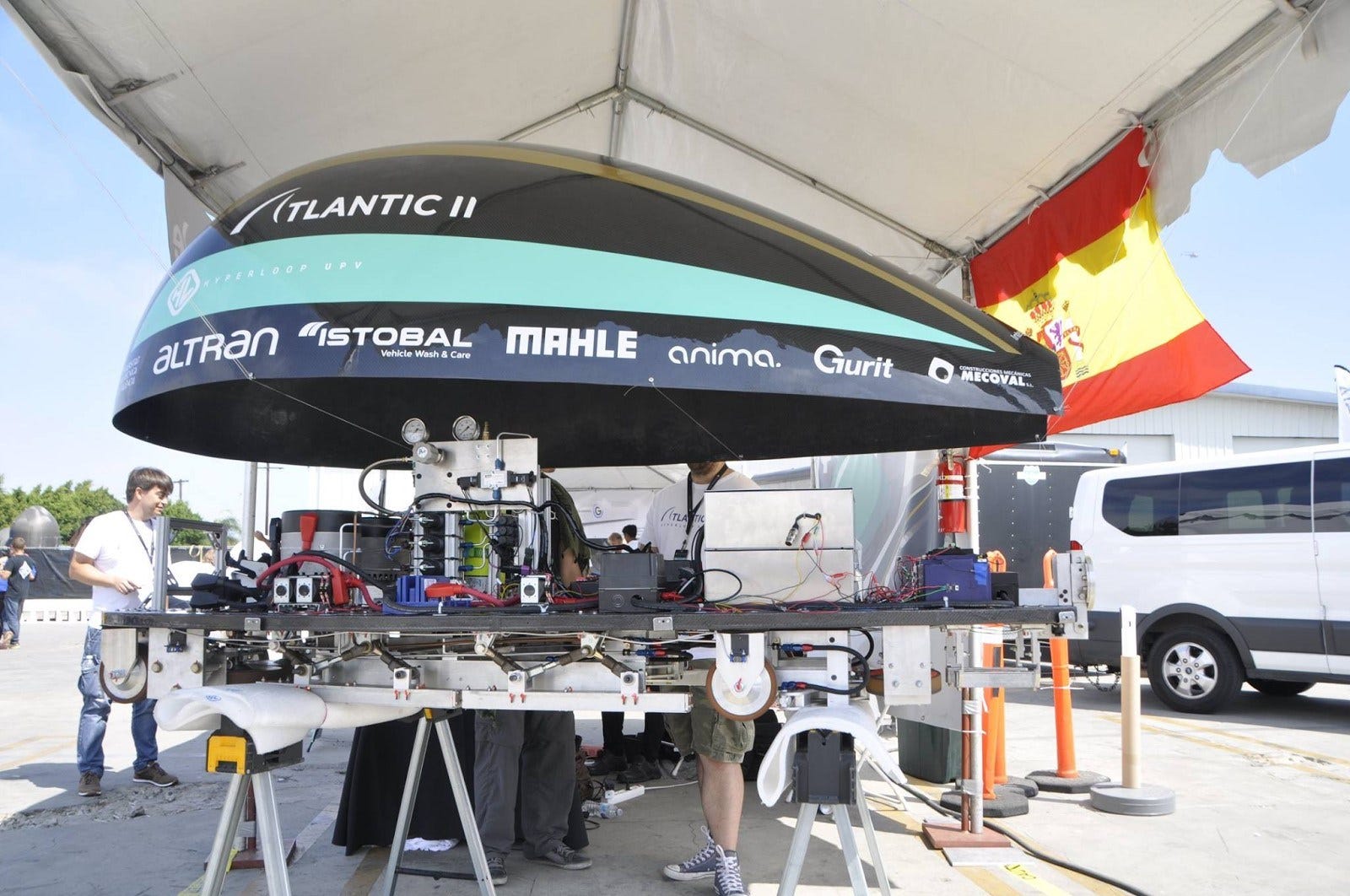Purdue Hyperloop Team Aims to Test With SpaceX
 This pod design
This pod design
Subscriber Benefit
As a subscriber you can listen to articles at work, in the car, or while you work out. Subscribe NowA group of Purdue students aspires to travel at the speed of sound as it accelerates the development of its second pod for SpaceX Hyperloop events. The Purdue Hyperloop team recently wrapped its second SpaceX competition and—like many Boilermaker engineers before them—will return to the drawing board to push the envelope on the future of travel.
The Hyperloop concept is the brainchild of Elon Musk, the same mind behind Tesla and SpaceX. Musk envisions the Hyperloop as a transportation system that could move passengers or cargo at about 800 mph between two cities connected by a tube. The air inside the tube is sucked out to create an extremely low pressure environment, or vacuum, with no air resistance.
Teams of universities and other developers are creating pods and testing them during a series of competitions at SpaceX’s headquarters in Hawthorne, California. The groups compete for the opportunity to blast their pods down the company’s mile-long test track.
“It’s very exciting, but also very intimidating to work on an entirely new [transportation concept],” says Purdue Hyperloop team member and aerospace engineering student Apoorv Ranjan. “You’re thrown into the deep end without much knowledge of what the end product is supposed to look like.”
The students’ ingenuity focused on speed at the most recent SpaceX Hyperloop competition in late August; teams were judged on how fast their pods could travel the length of the track. The Purdue team built an entirely new pod—the group’s second—to maximize its design for the new on-board propulsion system.
The pod uses two wheels that press against the SpaceX track, which Ranjan describes as a metal I-beam running the length of the tube. The wheels are powered by motors connected to very large batteries. Ranjan says “the massive challenge” was managing the pod’s weight; the team’s original one was about 350 pounds, but the propulsion system added about 200 pounds to the second pod.
“That was a major issue—how to make it the most efficient, even though we’re adding all this extra weight,” says Ranjan. “You need really big batteries; we had to find those batteries and make sure they were safe, because a big concern with any energy system is heating. You don’t want it to burst into flames. There were a lot of safety risks that needed to be monitored.”
The pod is equipped with about 50 sensors to monitor factors like pressure, temperature and voltage. The second generation pod is slightly smaller than the first to help offset the additional weight. The team carried over the magnet levitation system from the previous pod; a series of magnets placed in a specific orientation lifts the pod a fraction of an inch above the tube floor to eliminate resistance.
The team also designed all of the pod’s software from scratch, and that technological detail put the brakes on Purdue’s attempt to earn a test run on the SpaceX track. Last-minute software hiccups caused the team to miss the qualifying round to test its pod. Ranjan believes the competition was especially challenging, because the team only had six months to prepare, rather than the typical 12.
“We were crunched for time this competition. It was genuinely difficult; we had very few people this time around, because a lot of team members from the previous competition had graduated,” says Ranjan. “For the next competition, we’re going to focus more on our process, making sure we test all of our components and design methods to validate everything beforehand, so we’re ready to go during competition.”
For the upcoming event, about 10 months from now, the Purdue team plans to address issues from the previous competition and improve existing systems “to make what we think will be the fastest pod.”
“This a new technology—we can’t just Google how to make this,” says Ranjan. “This is all about students putting their heads together, taking what we’ve learned and trying to develop something entirely new,” says Ranjan. “I can see an infinite realm of possibilities from here on out of what we could end up making. It’s exciting to be part of that process.”
The team will submit its design package to SpaceX in two months—following in the footsteps of Purdue engineers who came before them and also dreamed designs that paved the way for tomorrow’s transportation.
Ranjan says critics doubt the Hyperloop will ever be a reality, but developers believe the futuristic concept could transform transportation.
Ranjan says SpaceX competitions are an opportunity to collaborate with other students, learn from professionals and put their pod to the ultimate test.
